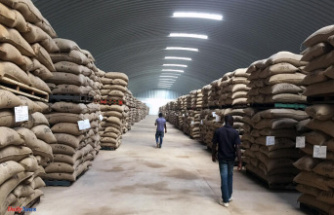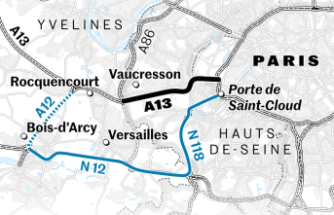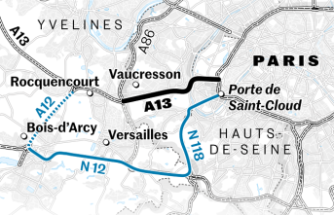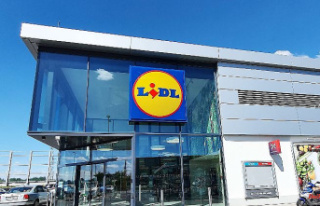The European gas price is declining noticeably, recently it was even at its lowest level for a good two months. In an interview with ntv.de, the managing director of the "Zukunft Gas" association explains why the price drop will not affect consumers for the time being.
ntv.de: The gas price has recently fallen noticeably and at times reached its lowest level since the end of July. What does this mean for the consumer?
Timm Kehler: The gas price, which has fallen at the moment, is still far too high. We have to realize that the prices paid for gas today are five times what they were a year and a half ago. This means that a wave of price increases is rolling towards consumers, even if natural gas prices are falling.
So consumers don't notice much of the price drop for the time being?
The opposite is even the case. In our opinion, many customers have not yet seen the real price peaks. They only reach consumers step by step. Many suppliers are even holding back. The mail with further price increases will only gradually reach customers.
So the increases are not lower due to the currently falling prices?
The prices that are currently being called up on the spot market are only a snapshot. The purchasing strategies of the suppliers are usually set up for the longer term. It is therefore not possible to say after a few days of falling spot market prices how this will affect the longer-term purchase prices of the suppliers.
What role do consumers and the weather play in price development?
Falling demand has a positive effect on prices. If gas consumption in private households and industry is reduced, this will have a dampening effect on prices. The same goes for the weather: when it's warm, less gas is used and prices go down as a result.
Why do the prices of the individual providers differ so much?
This is due to the different purchasing strategies. Many established companies and municipal utilities make long-term purchases. That is why many are able to pass on comparatively low prices to the customer. On the other hand, other suppliers who procure at very short notice are already feeling the full impact of the price curve.
What about industrial customers?
Unlike private households, the industry can definitely feel a relief - depending on how the individual companies buy in the market. The prices we always look at are spot prices, i.e. daily prices that are called at very short notice. Usually, industrial companies tend to buy forward. That means they procure gas a year, two, even three years in advance. In this way, you can protect yourself against price spikes to a certain extent.
Will natural gas prices fall back to pre-war levels?
There is at least a glimmer of hope. The extreme price spikes we've witnessed over the past several months involve a great deal of fear of what may be to come. It is now becoming increasingly clear that we can adjust supply and demand so that they fit together again. On the one hand, LNG terminals are being built and, on the other hand, consumers and industry are saving gas. It is foreseeable that the extreme rashes and nervousness will come to an end. At the same time, we see that the gas markets are relatively tight globally. This means that in the medium term we will not be able to completely replace Russia's pipeline exports with LNG. That's why I expect a higher price level than in the past two or three years.
Where will the price level level off?
So much will happen in the gas market in the next year and a half that we will see a relaxation. We could at least reach the price level from earlier this year. And as the US, Qatar and other regions get big LNG liquefaction projects off the ground and Europe develops a long-term strategy for importing, then we'll get back to the levels we saw in 2018 too.
What has to happen so that falling gas prices also reach consumers?
We have to adjust supply and demand so that it fits and there is no longer a shortage. The main task now is to ramp up LNG imports and negotiate long-term contracts with supplier countries. We see that so far too little is being invested in liquefaction capacity than is needed to produce more liquid natural gas than is currently the case.
Why is the gas price collapsing at all at the moment?
As already indicated: We always only look at the prices that are due for the next day. This is a market segment in which players move who have bought too little via long-term contracts. All market participants are now aware of the framework conditions and it is clear that no more gas will come from Russia. Accordingly, they have also covered themselves in the meantime. As a result, there is currently no longer such a great demand on the short-term futures markets, also because the storage facilities continue to fill up.
The Federal Network Agency called on consumers to save gas again today, consumption is increasing too much.
The goal is 95 percent by November 1—that's in three weeks. We currently have a memory level of 92 percent. Approximately 0.2 to 0.3 percentage points are added per day, with a downward trend. If you extrapolate that, it will be relatively close to reaching 95 percent. So we have to exercise restraint when it comes to gas demand, including in industry.
Juliane Kipper spoke to Timm Kehler












